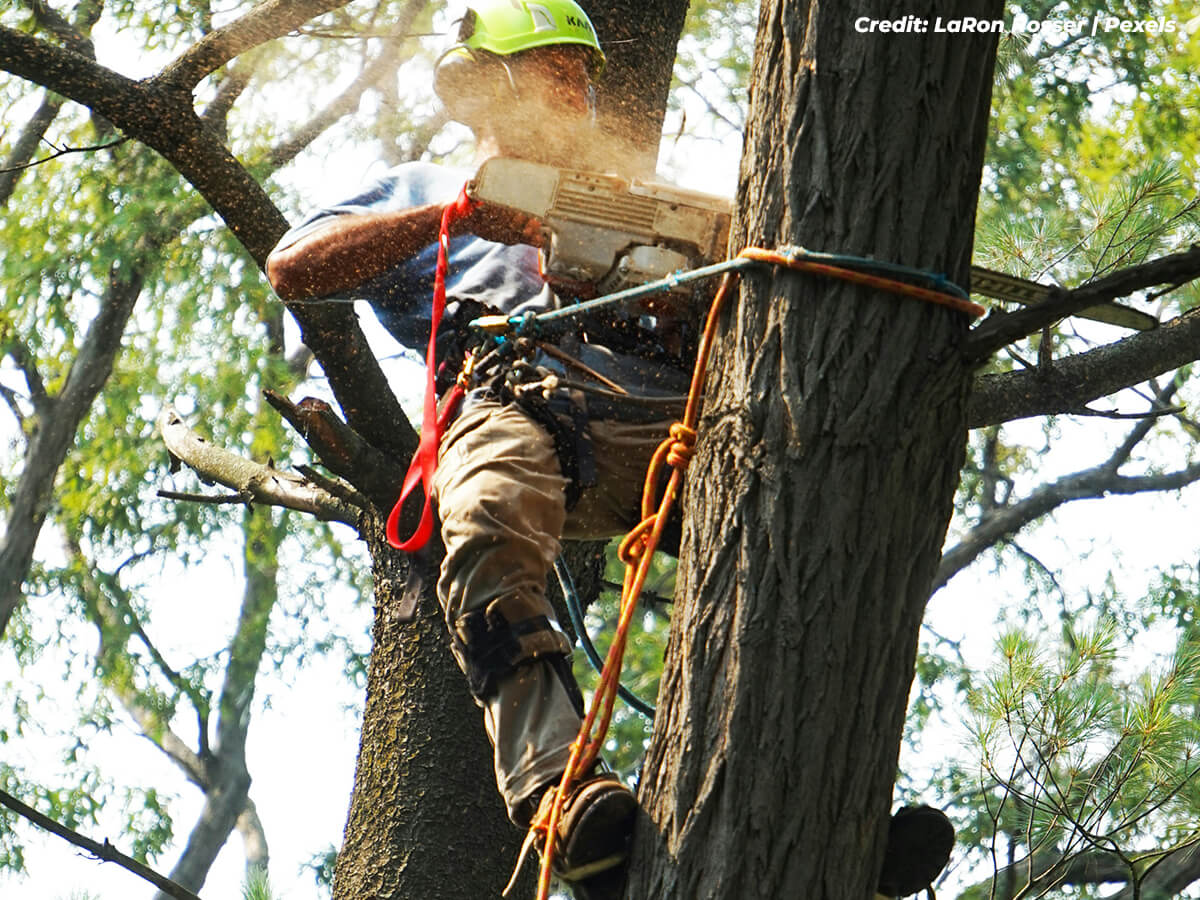
Tree pruning is an essential practice for maintaining the health, safety, and aesthetic appeal of trees. However, while you can tackle pruning on your own, there are certain advantages to getting the pros to handle that chore for you. Professional arborists have the training and tools to use specialized techniques when pruning to ensure trees remain strong, well-shaped, and free from hazards. Keep in mind that proper pruning enhances growth and prevents disease, in addition to contributing to the overall landscape’s beauty. Understanding some of the dos and don’ts of tree pruning can help homeowners appreciate the care and expertise arborists provide.
The Purpose of Tree Pruning
Pruning ultimately serves several key functions. First, it promotes healthy growth via removing dead, damaged, or diseased branches. Eliminating those problematic branches reduces the risk of infections spreading and allows the tree to direct its energy towards producing strong, healthy limbs instead. Second, pruning enhances a tree’s structure, helping it develop a more balanced shape that can withstand environmental stresses such as wind and heavy snowfall. Third, pruning improves safety by eliminating weak branches that could pose a risk to people, vehicles, o
Additionally, pruning contributes to the tree’s visual appeal. Overgrown or unbalanced branches can make a tree look neglected and uneven, whereas a properly pruned tree appears well-maintained and harmonious with its surroundings. In urban and residential settings, proper pruning also helps trees coexist with power lines, buildings, and pedestrian pathways without causing obstructions.

Types of Tree Pruning
Arborists use different pruning methods depending on the tree species, its condition, and its purpose in the landscape. The most common techniques include:
Crown Cleaning
This involves removing dead, diseased, or weak branches from the canopy. Crown cleaning is essential for maintaining tree health and preventing potential hazards caused by falling limbs.
Crown Thinning
Crown thinning reduces the density of a tree’s foliage, allowing more sunlight and air to circulate through the branches. This technique also helps prevent fungal growth and encourages healthy development. Thinning also reduces the weight of heavy limbs, minimizing the risk of breakage and damage to the tree’s surroundings.
Crown Raising
Raising the crown involves removing lower branches to provide clearance for pedestrians, vehicles, or structures. This technique is commonly used in urban environments for trees placed near roads or pathways.
Crown Reduction
This method reduces the overall size of the tree by selectively shortening branches. Crown reduction is often used when a tree has outgrown its space or needs to be shaped for aesthetic reasons. Unlike topping (which is a harmful practice that indiscriminately cuts large portions of the tree) crown reduction is done carefully and systematically to maintain the tree’s structural integrity.
Structural Pruning
Structural pruning focuses on young trees to establish a strong framework of branches. By shaping the tree early in its life, arborists can guide its growth to prevent structural weaknesses in the future, preserving its health and aesthetics (and making the tree safer to its surroundings). This is especially important for trees planted near buildings or other structures which have to consider objects in their vicinity.
Best Practices for Tree Pruning
Effective pruning requires knowledge and precision. Arborists are trained to follow best practices to ensure trees remain healthy and resilient. Some of these key principles include:
Pruning at the Right Time
The timing of pruning varies depending on the tree species and the desired outcome. In general, late winter or early spring (before new growth begins) is the ideal time for pruning. Pruning during this period allows trees to heal quickly and reduces stress. It also pays to know a thing or two about pruning trees in winter to ensure the stress on your trees stay minimal (e.g. pruning on mild, dry days or refraining from starting early). Some species, however, benefit from summer pruning to control growth or remove diseased branches.
Using Proper Cutting Techniques
Arborists have the training to make precise cuts to promote healing and reduce the risk of disease. As a rule, they also avoid cutting too close to the trunk (as this can damage the tree’s natural protective barrier). Instead, they prune just outside the branch collar (the swollen area where the branch meets the trunk) to encourage proper wound closure.
Avoiding Over-Pruning
Removing too many branches at once can stress a tree and weaken its ability to photosynthesize. Arborists follow the guideline of removing no more than 25% of a tree’s foliage in a single pruning session. Gradual pruning over multiple seasons is often the best approach for trees that require significant shaping.
Considering the Tree’s Natural Shape
Each tree species has a unique growth pattern, and pruning should enhance rather than alter its natural form. Arborists avoid excessive shaping that forces a tree into an unnatural appearance (as this can lead to long-term structural issues).
Using the Right Tools
Professional pruning requires high-quality, sharp pruning tools such as hand pruners, loppers, and saws. Using the correct tool for each task ensures clean cuts that heal quickly. Arborists also regularly sanitize their equipment to prevent the spread of disease between trees.
The Importance of Hiring a Professional Arborist
While minor pruning can be done by homeowners, significant tree maintenance is best left to certified arborists. These professionals have the knowledge, experience, and equipment to assess a tree’s health and determine the best pruning approach. They also follow safety protocols when working with large trees or using specialized equipment such as climbing gear and chainsaws.
Professional arborists understand the specific needs of different tree species and ensure that pruning enhances longevity rather than causing harm. They also help identify potential issues, such as pest infestations or structural weaknesses, before they become serious problems.
Knowing some of the basics of tree pruning is vital to doing the task safely (if you’re intent on doing the task yourself; however, leaving it to the professionals is one way to ensure the work gets done professionally, safely, and on time. Through careful techniques arborists help trees thrive in both urban and natural environments. By following best practices and seeking professional expertise when needed, homeowners can ensure their trees remain strong, well-shaped, and visually appealing for years to come. Proper tree care not only enhances individual trees but also contributes to the overall health and harmony of the surrounding landscape.
When you need professional arborists to help you deal with all the intricacies of tree care, Dave Lund Tree Service is happy to lend a hand. Our team has had years of experience dealing with a wide range of tree-related issues, and we’re happy to put ourselves at your service to give your trees the care they deserve. Give us a call now at (905) 775-1020 for reliable arborists you can count on to take proper care of your trees.
